Bloomington gives $500 fine after activist writes “VOTE” on street, cites code on defacing property
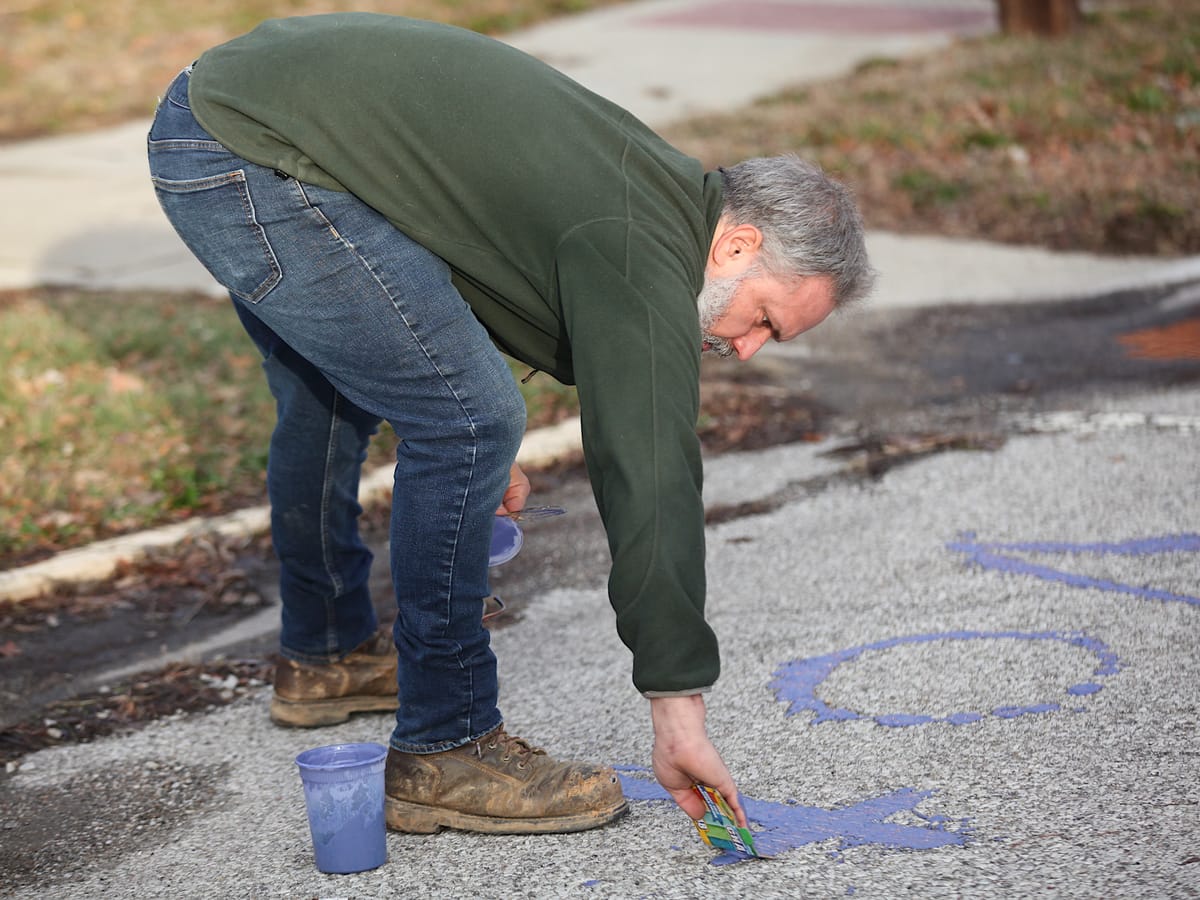
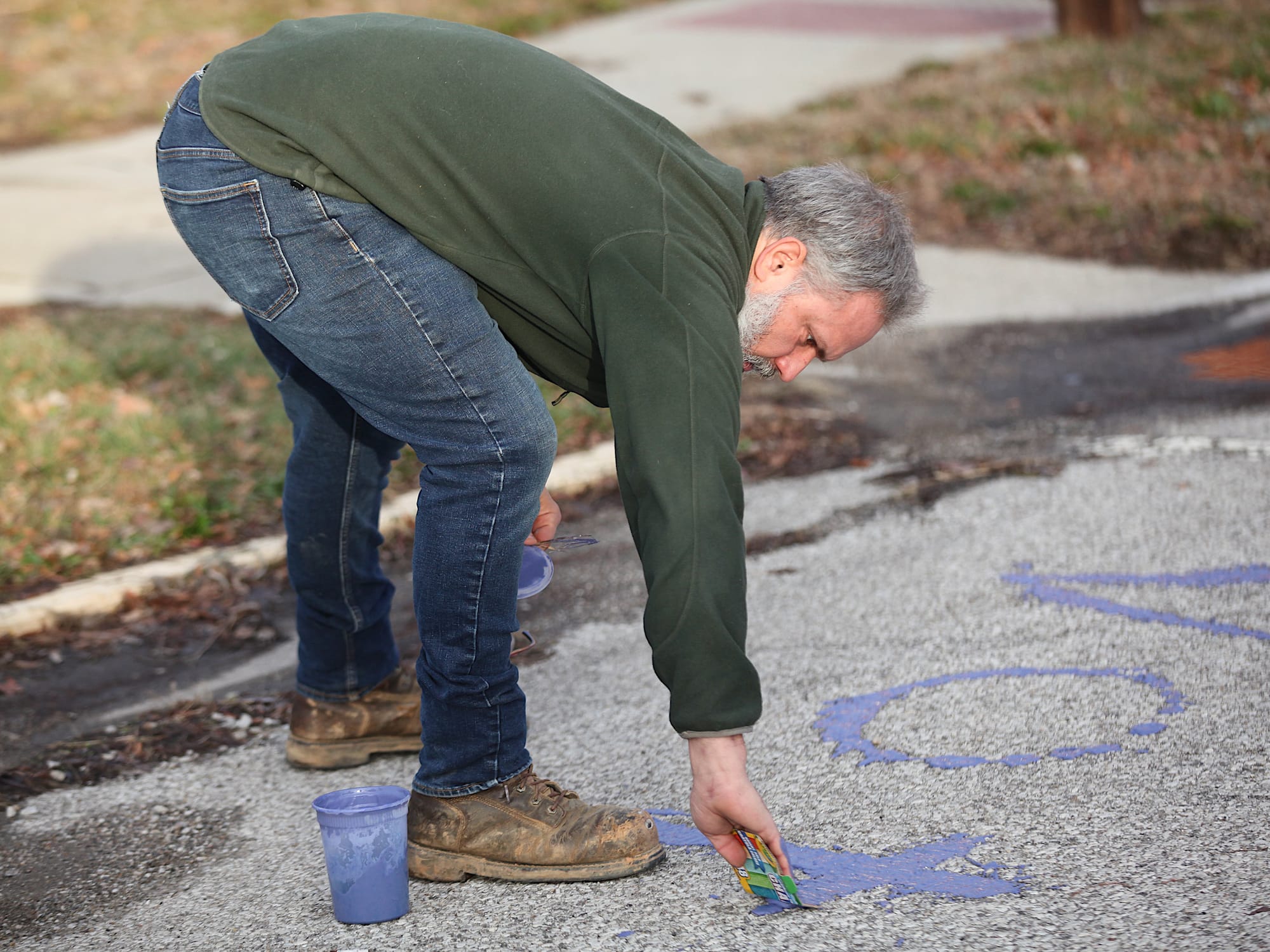
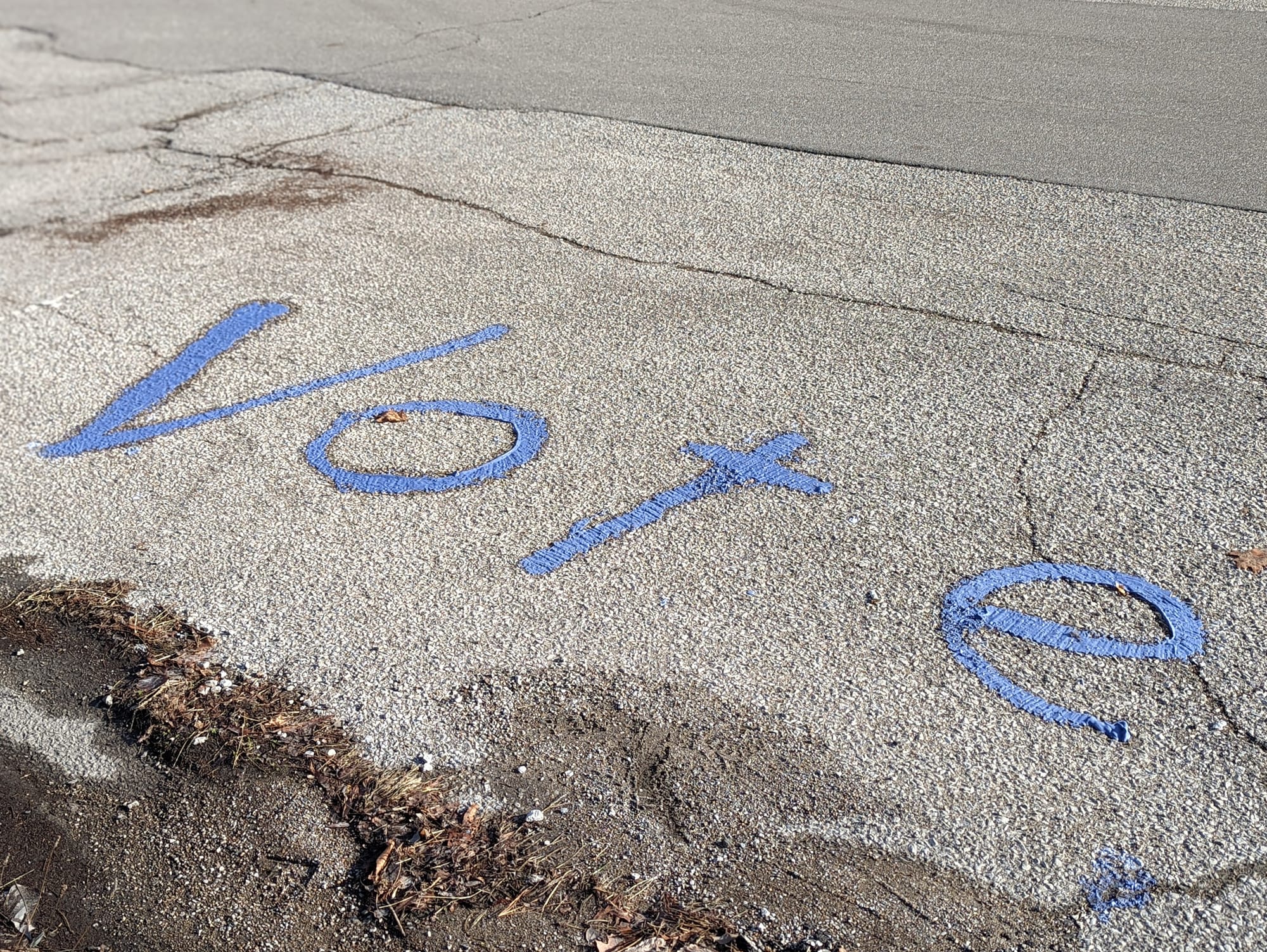
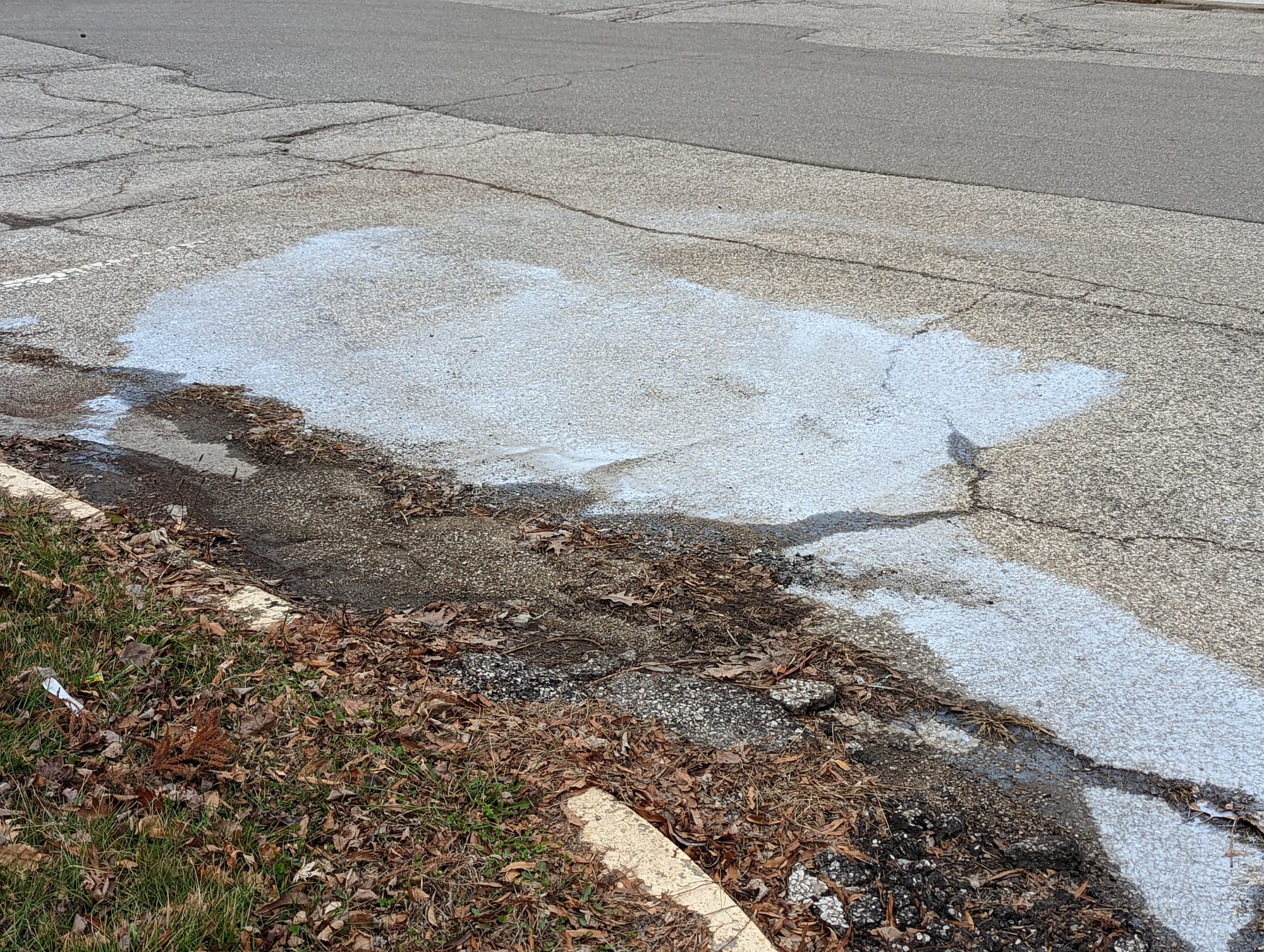
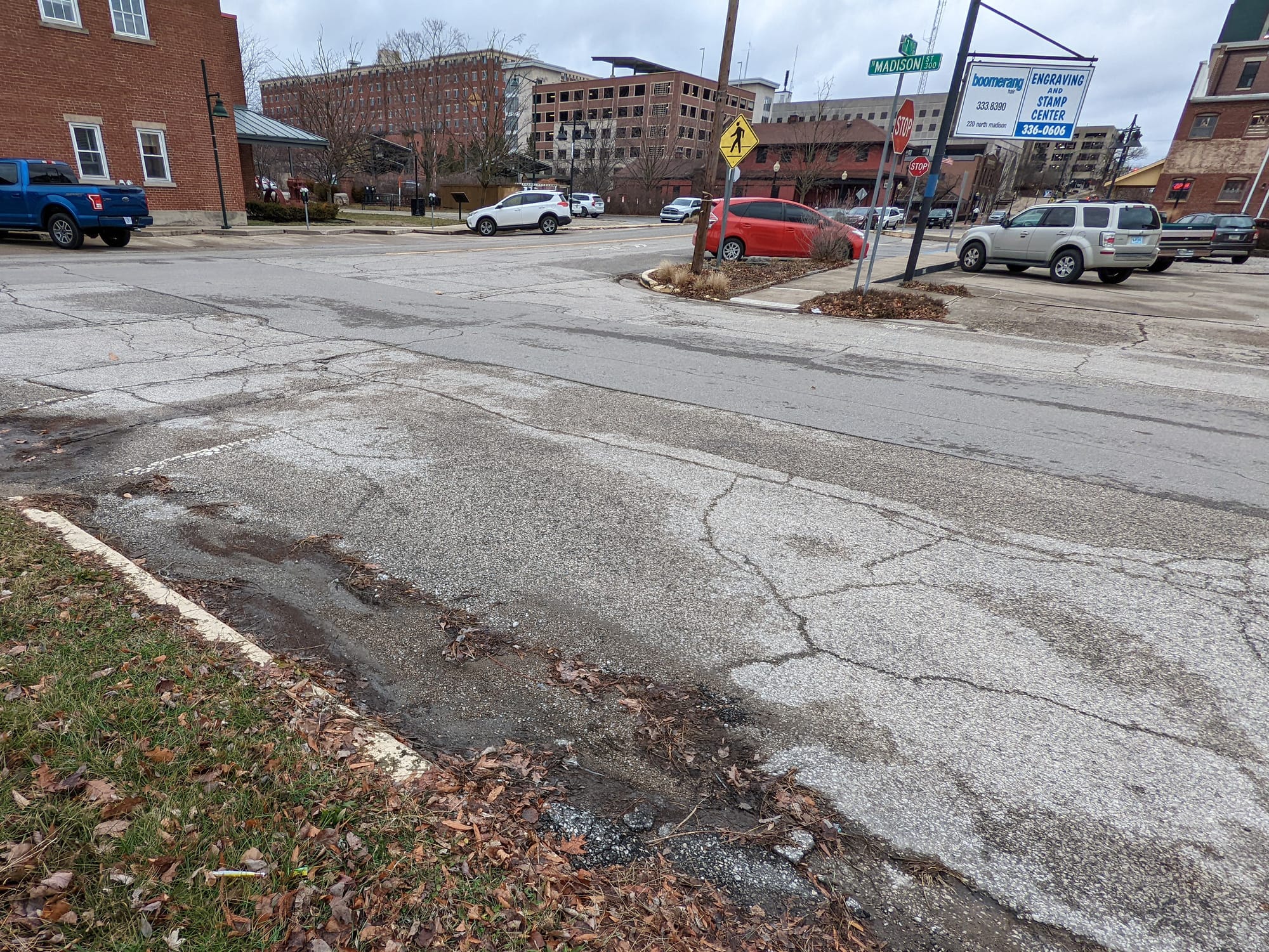
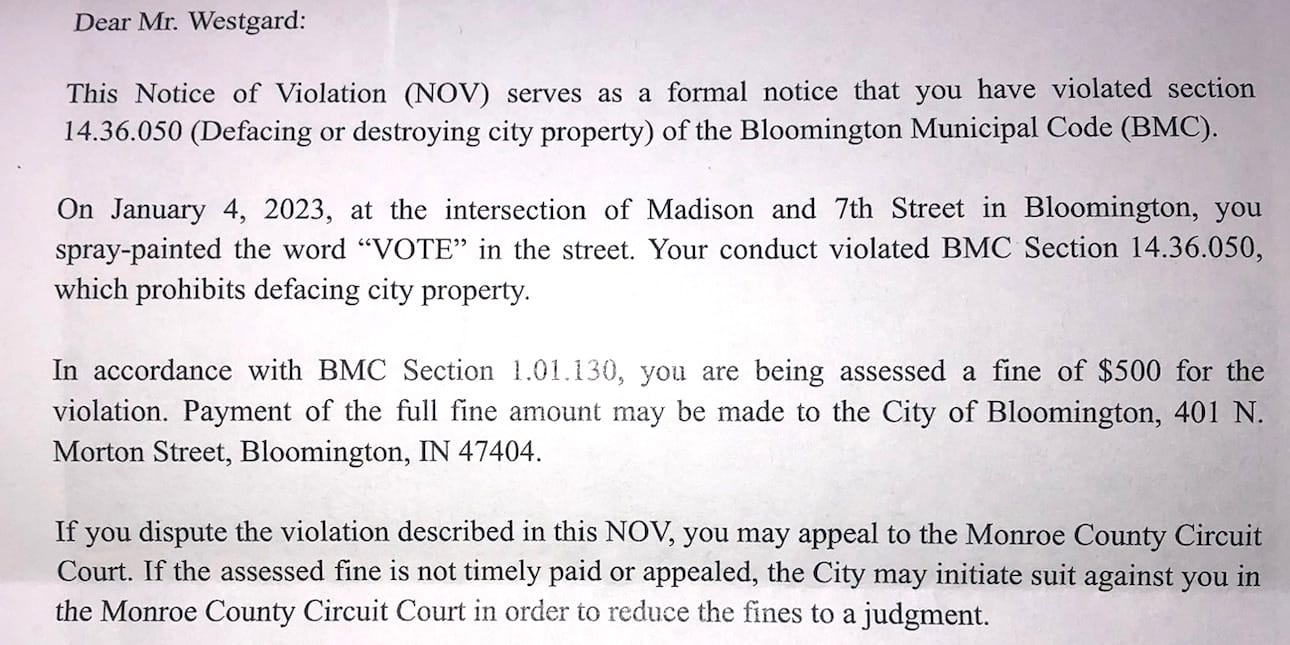
Area resident Thomas Westgård has been fined $500 by Bloomington after writing “VOTE” on a city street.
Westgård sent The B Square a photo of the letter that he reported receiving from the city on Friday.
The letter, signed by Bloomington public works director Adam Wason, states: “On January 4, 2023, at the intersection of Madison and 7th Street in Bloomington, you spray-painted the word ‘VOTE’ in the street.”
The letter continues: “In accordance with BMC Section 1.01.130, you are being assessed a fine of $500 for the violation.”
As reported by The B Square, on the morning of Jan. 4, 2023 Westgård dolloped some purple compound on the pavement to spell out the word “VOTE” at the intersection of Madison and 7th streets.
Writing “VOTE” on the street surface was an effort by Westgård to get arrested for violating the city’s new policy on the installation of private art in the public right-of-way. Westgård wanted to draw attention to what he says is a history of viewpoint discrimination by Bloomington, when it comes to regulating speech.
The city’s new policy on private art installations in the public right-of-way prohibits permanent art that contains any words, letters, or universally recognized symbols. Westgård chose the word “VOTE” for his protest to fit the location, which was in front of Monroe County’s Election Central building.
According to the city’s letter, the avenue of appeal available to Westgård is to take the matter to the Monroe County circuit court. Westgård told The B Square: “I will absolutely appeal.”
One issue that could come up for any appeal is the city’s factual claim that Westgård “spray-painted” the word “VOTE” on the street. The purple compound that he mixed up in a plastic cup was chalk-based. He glopped it onto the asphalt in the basic shape of the letters, then used a piece of cardboard to spread it out.
Based on the appearance of pavement on the day after Westgård wrote on it, it appears that someone tried to slosh water over the letters. A purple smear was left—but it was not recognizable as text. Westgård told The B Square it was not him who made an attempt to wash away the word.
On Friday, after the Bloomington area saw around three-quarters of an inch of rain the previous day, there was no trace of purple on the pavement.
The specific local law that the city says Westgård violated is BMC 14.36.050:
14.36.050 – Defacing or destroying city property.
It is unlawful for any person to remove, interfere or meddle with any grade stakes, fences, lights or other guards placed by the city, its agents or employees, or required by ordinance to be placed in or about the streets, alleys and public places of the city, or to destroy or deface, mutilate, change, modify, injure or remove, or to in any manner interfere or meddle with street signs placed by the city on its streets, alleys and public places, or to destroy, deface, mutilate, remove or injure any seats, benches, stands, signs, monuments or other property located in the streets or alleys, parks or buildings or other public places of the city.
The amount of the fine that the city has imposed is described in a different chapter, which includes a kind of catchall for fine amounts: BMC 1.01.030. Under that chapter the city could have fined Westgård up to $2,500.




Comments ()